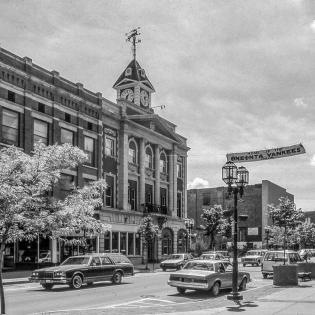Nonprofits in Our Community (6-8)
The purpose of this lesson is to have students name and recognize nonprofit organizations within the local community.
The learner will:
- name nonprofit organizations in the community.
- identify nonprofit organizations using resources like telephone books, technology and local periodicals.
- Research Organizer (see Attachment One)
- The Yellow Pages section from several telephone books
- Web site addresses of your local community foundations
- Local periodicals and publications such as magazines, programs from local symphonies, community bulletins, Chamber of Commerce guide, etc.
Helpful Web sites include:
- Glossary of Philanthropic Terms. /materials/vocabulary.asp
- GuideStar: the Donor's Guide to the Charitable Universe. [web page] December, 2000, https://www.guidestar.org/
- Idealist.org. https://www.idealist.org/ - a project of Action Without Borders. Over 45,000 nonprofit and community organizations in 165 countries, which can be searched by name, location or mission. It also has information on volunteer opportunities in local communities and the world as well as a Nonprofit Career Center with hundreds of job and internship listings.
Instructions
Teacher note: The lessons in this unit are written with the understanding students know the definition of nonprofit and for profit organizations. Please see /materials/vocabulary.asp if students need a better understanding of nonprofit or any associated vocabulary.
Review the definition of a nonprofit organization with the students. A nonprofit organization's income is not used for the benefit of people with an interest in the company. Separate tax treatment by the IRS exists based on whether it is a charity or not. Cite a few examples of well known nonprofit organizations like The Red Cross, United Way, Goodwill, etc.
The students will research local nonprofits. Have three stations set up around the classroom: Station 1 - telephone books, Station 2 - computer, and Station 3 - local publications. Before dividing students into three groups, brainstorm and list key words students can look for when searching on the Internet and in the Yellow Pages. For a Web search, type in the city or community name and words like nonprofit, foundations, or charities. Guidestar https://www.guidestar.org/ is a Web site that can be used to find nonprofit organizations. Click on the advance search and type in the zip code for a local area. This will help narrow a search for nonprofit organizations for a particular community. Another very helpful web site is Idealist at www.idealist.org. Click on “Organizations” on the right side of the home page under “Advanced Search.” On the search page entering the country, state and city, such as “United States, Indiana and Indianapolis” will result in a comprehensive list of nonprofits and their focus. For a Yellow Pages search, look in the index for subjects like churches, community service agencies, hospitals, mental health services, orchestras and bands, relief agencies, veterans organizations, volunteer services, women’s services, youth organizations and centers, zoos, etc. Research Organizer (see Attachment One) should be duplicated, with several - at least one per member - distributed to each research group.
Divide students into three groups and instruct each group to find local nonprofit organizations. Students will keep a running record of the organizations they find. Have each group of students circulate to each station.
After students have generated a list of nonprofit organizations, share the lists as a class. On chart paper, record all the local nonprofits children found and discuss why each organization is a nonprofit. Ask students if they can name any other local nonprofits not mentioned. The list should include organizations like:
Local zoo: money raised by ticket sales goes toward caring for animals and the facility.
Local food bank: money raised pays for maintaining building, buying supplies and food.
Churches and Synagogues: money collected pays for building maintenance, employees, and community services.
Have students create a mobile of local nonprofit organizations. The students will write the name of an organization on an index card and draw a picture on the back of the card depicting how the organization helps the community. Each mobile should have five organizations named. Students will receive one point for each nonprofit named.
Handouts
Philanthropy Framework
-
Strand PHIL.II Philanthropy and Civil Society
-
Standard PCS 04. Philanthropy and Geography
-
Benchmark E.1 Name examples of civil society organizations in the community.
-
-
